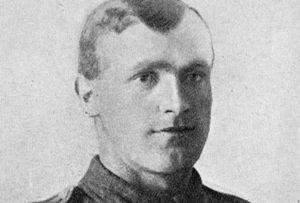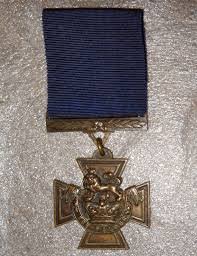Swansea Connections with Victoria Cross Winner 2
The second man with a Swansea Connection, is George Prowse.

Prowse born 1886, Gilfach Goch, Llantrisant. Information in regards to his young life is uncertain. 1915, the year after after the First World War broke out, Prowse living at this time at Landore, Swansea he enlisted royal Naval Volunteer Reserve, at the rate of Ordinary Seaman, after a series of training he rose to the rank Able Seaman and posted to the Drake Battalion.
Prowse saw action over in the Egypt with the Gallipoli Campaign it is uncertain how much action he served as he was hospitalized with jaundice and gastroenteritis, he rejoined his battalion on January 1916. By May 1916, the battalion was moved to France, when Prowse was promoted to Petty Officer
The battalion saw action during the Battle of the Ancre (13-16 November 1916), on the first day of action Prowse was injured with a gun shot to his left thigh. Prowse was hospitalized to a hospital at Epsom Cottage Hospital. An interesting fact with Epsom, is to do to the racetrack, during 1913, Emily Davison, threw herself in front of the king's horse, Anmer ridden by Herbert Jones. Davison died four days later at the Epsom Cottage Hospital.
Prowse was discharged from hospital and returned to his base at Blandford and returning to France in 1917. He was promoted to rank of Chief Petty Officer
Pronville, France 2nd September 1918, the day, the deed in which Prowse was awarded his VC. During this day Prowse in charge of a small party captured a enemy strong point with 23 prisoners and taking 5 machine guns. On a further 3 occasions he showed the same heroism.
Prowse was killed on the 27th September in action at Anneux. Sadly his body couldnt be found and he is remembered on the Vis-en-Artois Memorial.
Sarah Prowse, wife, was presented on 17th July 1919 her husband's Victoria Cross by King George V. His being the last one with the blue ribbon.

The citation reads
"For most conspicuous bravery and devotion to duty when, during an advance, a portion of his company became disorganised by heavy machine gun fire from an enemy strong point. Collecting what men were available he led them with great coolness and bravery against this strong point, capturing it together with twenty-three prisoners and five machine guns. Later, he took a patrol forward in face of much enemy opposition, and established it on important high ground. On another occasion he displayed great heroism by attacking single-handed an ammunition limber which was trying to recover ammunition, killing three men who accompanied it and capturing the limber. Two days later he rendered valuable services when covering the advance of his company with a Lewis gun section, and located later on two machine gun positions in a concrete emplacement, which were holding up the advance of the battalion on the right. With complete disregard of personal danger he rushed forward with a small party and attacked and captured these posts, killing six enemy and taking thirteen prisoners and two machine guns. He was the only survivor of the gallant party, but by this daring and heroic action he enabled the battalion on the right to push forward without further machine gun fire from the village. Throughout the whole operations his magnificent example and leadership were an inspiration to all, and his courage was superb"
It is important to note that, that men who signed and served with the Royal Navy did see action on the Western Front